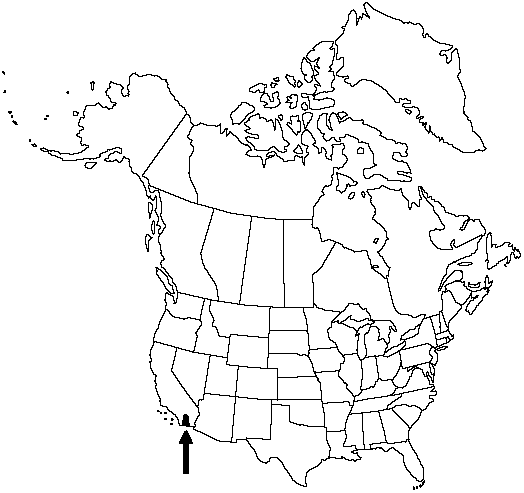Difference between revisions of "Pinus quadrifolia"
U.S.D.A. Div. Forest. Bull. 14: 17. 1897.
FNA>Volume Importer |
FNA>Volume Importer |
||
| Line 15: | Line 15: | ||
|name=Pinus cembroides var. parryana | |name=Pinus cembroides var. parryana | ||
|authority=Voss | |authority=Voss | ||
| − | }}{{Treatment/ID/Synonym | + | }} {{Treatment/ID/Synonym |
|name=Pinus juarezensis | |name=Pinus juarezensis | ||
|authority=Lanner | |authority=Lanner | ||
| Line 32: | Line 32: | ||
|elevation=1200–1800m | |elevation=1200–1800m | ||
|distribution=Calif.;Mexico in Baja California. | |distribution=Calif.;Mexico in Baja California. | ||
| − | |discussion=<p>Pinus quadrifolia is the rarest pinyon in the flora. It hybridizes naturally with P. monophylla.</p> | + | |discussion=<p><i>Pinus quadrifolia</i> is the rarest pinyon in the flora. It hybridizes naturally with <i>P. monophylla</i>.</p> |
|tables= | |tables= | ||
|references= | |references= | ||
| Line 55: | Line 55: | ||
|publication year=1897 | |publication year=1897 | ||
|special status= | |special status= | ||
| − | |source xml=https://jpend@bitbucket.org/aafc-mbb/fna-data-curation.git/src/ | + | |source xml=https://jpend@bitbucket.org/aafc-mbb/fna-data-curation.git/src/8f726806613d60c220dc4493de13607dd3150896/coarse_grained_fna_xml/V2/V2_30.xml |
|genus=Pinus | |genus=Pinus | ||
|species=Pinus quadrifolia | |species=Pinus quadrifolia | ||
Revision as of 16:46, 18 September 2019
Trees to 10m; trunk to 0.5m diam., straight, much branched; crown dense, becoming rounded. Bark red-brown, irregularly furrowed and cross-checked to irregularly rectangular, plates scaly. Branches spreading to ascending, persistent to trunk base; twigs slender, pale orange-brown, puberulent-glandular, aging brown to gray-brown. Buds ovoid, light red-brown, ca. 0.4–0.5cm, slightly resinous. Leaves (3–)4(–5) per fascicle, persisting 3–4 years, (2–)3–6cm × (1–)1.2–1.7mm, curved, connivent, stiff, green to blue-green, margins entire to minutely scaly-denticulate, finely serrulate, apex subulate, adaxial surfaces mostly strongly whitened with stomatal bands, abaxial surface not so but 2 subepidermal resin bands evident; sheath 0.5–0.6cm, scales soon recurved, forming rosette, shed early. Pollen cones ovoid, ca. 10mm, yellowish. Seed cones maturing in 2 years, shedding seeds and falling soon thereafter, spreading, symmetric, ovoid before opening, broadly ovoid to depressed-globose when open, (3–)4–8(–10)cm, pale yellow-brown, sessile to short-stalked, apophyses thickened, strongly raised, diamond-shaped, transversely keeled, umbo subcentral, low-pyramidal or sunken, blunt. Seeds obovoid, body ca. 15mm, brown, wingless.
Habitat: Dry rocky sites
Elevation: 1200–1800m
Distribution

Calif., Mexico in Baja California.
Discussion
Pinus quadrifolia is the rarest pinyon in the flora. It hybridizes naturally with P. monophylla.
Selected References
None.